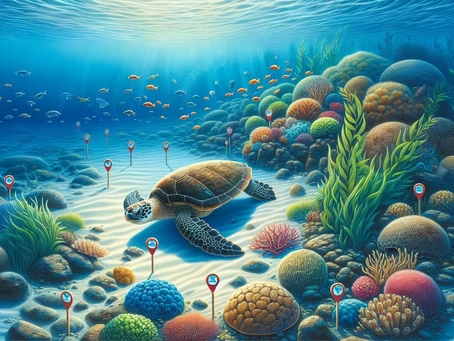Sea Turtles and the Fight for Survival
Sea turtles, the ancient mariners of our oceans, symbolize resilience, beauty, and ecological balance. Yet their survival is at risk due to mounting human pressures and environmental changes. From plastic pollution to coastal development, these challenges threaten not only turtles but the health of entire marine ecosystems. By exploring their species diversity, life cycle, threats, and conservation efforts, we see why protecting sea turtles is essential for the planet’s future.
Meet the Majestic Mariners
The Leatherback’s Epic Voyage
The leatherback turtle is the largest of its kind, capable of migrating thousands of miles across oceans. With hydrodynamic bodies and insulating fat, they thrive in both cold and tropical waters. Their journeys are fueled by two forces: the search for jellyfish, their main food source, and the drive to return to natal beaches to reproduce. Despite their endurance, they face peril from fishing gear, pollution, and habitat loss.
Green Turtles: Gardeners of the Sea
Green turtles graze on seagrass and algae, shaping healthy marine meadows. By trimming seagrass beds, they prevent overgrowth and support biodiversity. Even their nesting process enriches beaches with nutrients. Yet, these vital grazers are under threat from entanglement, egg harvesting, and shrinking nesting habitats.
Hawksbill Turtles: Reef Architects
With their sharp beaks and patterned shells, hawksbills maintain coral reef balance. They regulate sponge populations, recycle nutrients, and aerate beach sands. However, coral bleaching and illegal trade of their shells place them at critical risk.
Loggerheads and Ridleys: Ocean Nomads
Loggerheads and Ridleys are migratory wanderers, crossing vast distances and feeding on varied prey. Their mysterious movements still puzzle researchers, but one truth is clear: safeguarding their migratory routes is essential for their survival.
Threats to Sea Turtle Survival
Plastic Pollution
- Turtles mistake plastic bags for jellyfish, leading to blockages or death.
- Entanglement in nets and rings causes injury and drowning.
- Debris damages coral reefs, harming vital habitats.
Climate Change
- Rising seas erode nesting beaches.
- Warmer sands skew hatchling sex ratios, reducing genetic diversity.
- Coral bleaching disrupts hawksbill habitats.
Bycatch in Fishing
Accidental capture in nets and longlines remains one of the greatest threats. Turtle excluder devices (TEDs), circle hooks, and eco-friendly fishing methods offer solutions, but enforcement and adoption are uneven.
Coastal Development
Tourism and construction destroy nesting grounds, while artificial lighting disorients hatchlings. Shielded lights and careful beach management can reduce harm and coexist with turtle conservation.
Conservation Efforts
Community and Grassroots Action
- Villages patrol beaches to protect nests.
- Eco-tourism educates visitors and funds conservation.
- School programs empower children as future ocean stewards.
Global and Government Initiatives
- Marine Protected Areas safeguard nesting and feeding grounds.
- International treaties like CITES regulate turtle trade.
- Stronger penalties and enforcement fight poaching and trafficking.
Rescue and Rehabilitation
Turtle hospitals treat injuries from pollution, fishing, and boat strikes. Success stories of release inspire global support and highlight the value of veterinary care in conservation.
The Ripple Effect: Why Turtles Matter
Sea turtles are keystone species, shaping ecosystems by controlling jellyfish, maintaining seagrass beds, and sustaining coral reefs. Their presence ensures oceanic biodiversity and resilience. Saving turtles means safeguarding countless other species and preserving the balance of our seas.
Conclusion
Sea turtle conservation is about more than protecting a single species—it is about sustaining the very systems that support marine and human life. By reducing plastic use, supporting eco-friendly policies, and engaging in local and global initiatives, we can ensure these ancient mariners continue their journey across oceans for generations to come.

